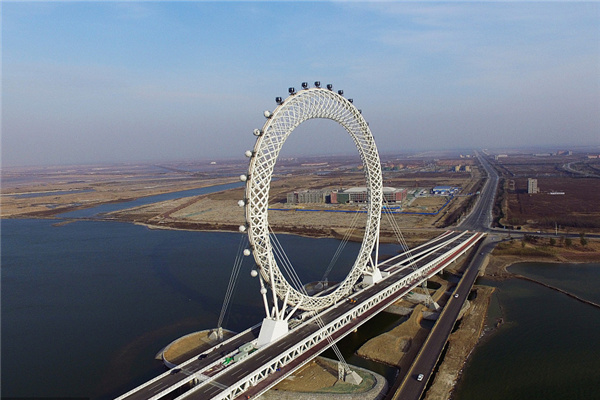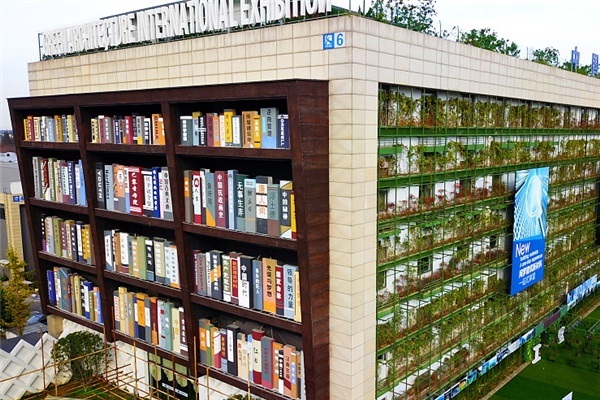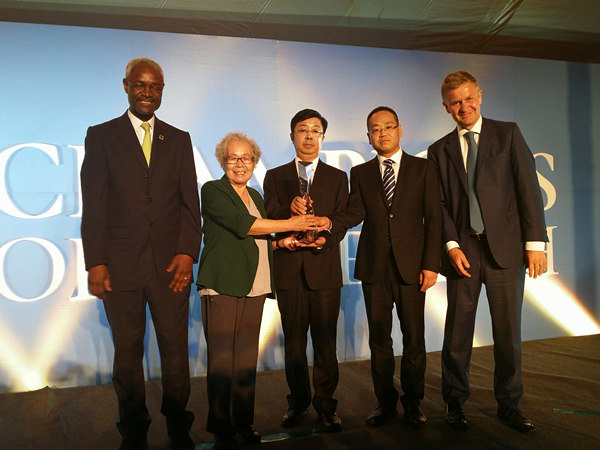

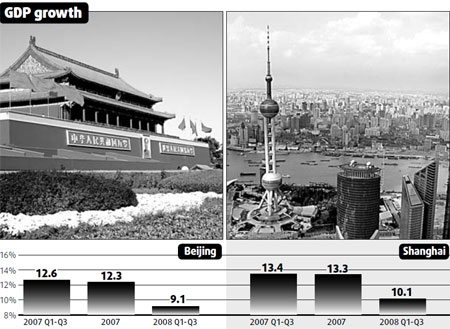
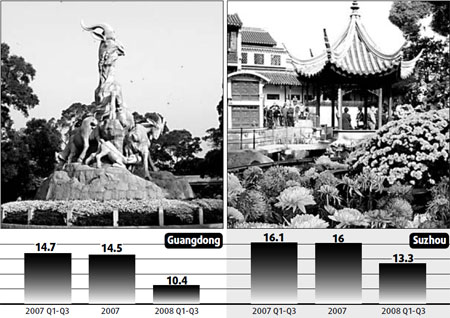
The coastal regions and the major cities spearheaded China's economic reform and opening up in the past three decades.
Now as the global economy sinks into a major recession, these pioneers of growth are taking the lead in keeping the Chinese economy on an even keel.
As the country's largest province in terms of economic clout, Guangdong, a major manufacturing hub in southern China, took a hard blow from falling consumer demands in the US and Europe. In the first three quarters of 2008, growth of the Guangdong economy, which accounted for one eighth of the national GDP, slowed to 10.4 percent, down 4.3 percentage points from a year earlier period.
Orders for the latest edition of Canton Fair, a barometer of China's trade, which concluded in early November, shrank 17.5 percent from the previous year, the first decline in the last five years.
It is estimated that the region's export growth may slow to less than 10 percent next year, which is likely to drag the GDP growth into a single-digit pace, well below the average 13.7 percent growth of the past 30 years.
To avoid a further slowdown, the Guangdong provincial government plans to invest 2.37 trillion yuan in various mega-projects in the next five years.
About 1.26 trillion yuan is earmarked for the establishment of a comprehensive transportation network and energy system, which includes 346.4 billion for subway construction. Another 731.2 billion yuan will go to major projects in steel making, integrated crude oil refining, shipbuilding and hi-tech industries. The remaining 375 billion yuan will be used in public infrastructure, urban and rural development, social programs and environmental protection.
The local government is taking the stimulus package as an opportunity to push forward its industrial restructuring and upgrading plan, as the once-booming original equipment manufacturer (OEM) businesses have stalled further development of local enterprises due to sluggish overseas demands.
In the January to September period, a total of 7,148 enterprises in Guangdong went bust, the bulk of which are factories doing OEM businesses in the Pearl River Delta cities, such as Dongguan, Zhuhai and Shenzhen.
With the help of the government-led investment, the Pearl River Delta, generating 80 percent of Guangdong's GDP within one fifth of its total territory, is expected to be transformed from a labor intensive manufacturing center into an industrial base for logistics, finance, exhibition, automobile and refined manufacturing within the next five years.
Shanghai, the economic powerhouse in eastern China's coastal area, is also facing a major slowdown, with its economic growth slowing to 10.1 percent in the first three quarters of 2008, lower than the 13.4 percent in the same period last year. Industrial investment dropped by 1 percent in the first 10 months of 2008, compared with the nation's average of 30 percent growth.
To beef up its economy, the city will allocate 500 billion yuan in the next few years. Some 200 billion yuan will go towards leading industries, such as steel making, aircraft manufacturing, automobile and shipbuilding, in the hope that it will help secure 8 to 9 percent industrial investment growth in 2009.
The remaining capital will go to the construction of highways and railroads connecting the city with its neighboring Zhejiang and Jiangsu provinces. These mega-projects will accelerate the integration of the Yangtze River Delta, in order to beef up the region's competitiveness.
Another major industrial hub paralleling Shanghai in the Yangtze River Delta is Suzhou. The Suzhou Industrial Park (ISP), a national demonstration industrial base about 75km northwest of Shanghai, has also seen its economic growth decline in the second half of 2008. In November, both its industrial output and foreign trade growth dropped to 16 percent from 23 percent and 26 percent in June respectively. It is estimated that the ISP's industrial output will grow at a moderate 10 to 15 percent pace next year.
The region plans to dole out 129.3 billion yuan to strengthen its capacity in technology research and development and improve the public infrastructure. The key investments include 3 billion yuan for a new software development zone, 360 million yuan for a biochemical development and research center, 8.2 billion yuan for rural infrastructure, 1.2 billion yuan for new apartment buildings and 1.8 billion yuan for highways.
Beijing, the nation's political and cultural center, was also hit by the financial storm. After sustaining above 11 percent economic growth for five consecutive years, the city is likely to see the growth rate fell below 10 percent in 2008 and 2009. As most of the middle class people's savings evaporated with the Chinese stock market, real estate and automobile purchases aren't likely to serve as an engine for the city's economic growth in the near future.
From January to September 2008, property development in Beijing dropped 8.12 percent from the same period last year, the steepest fall in ten years, while new home sales fell by 50 percent year-on-year.
To help shore up its economy for the next two years, Beijing will allocate 120 to 150 billion yuan investment on public infrastructure and programs to improve people's livelihoods. The investment is expected to mobilize 1 trillion yuan from private sector, with a goal of securing an annual GDP growth of 9 to 9.5 percent in 2009.
By 2010, the city plans to extend its existing 200 km subway lines to 300 km and build welfare houses with a total area of 18 million sq m, which includes 4.8 million sq m of affordable houses, 1.2 million sq m low-rent residential units, and 12 million sq m houses with price limits.
Other than these economic powerhouses, local governments across the country have unveiled their stimulus plans. The combined local investment demands are estimated to reach more than 10 trillion yuan.
(China Daily 01/05/2009 page9)


